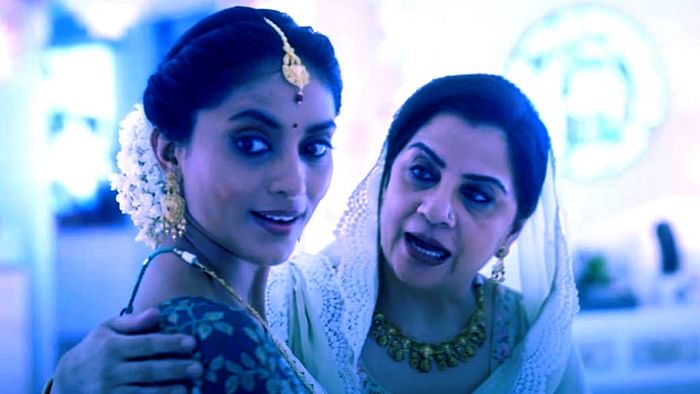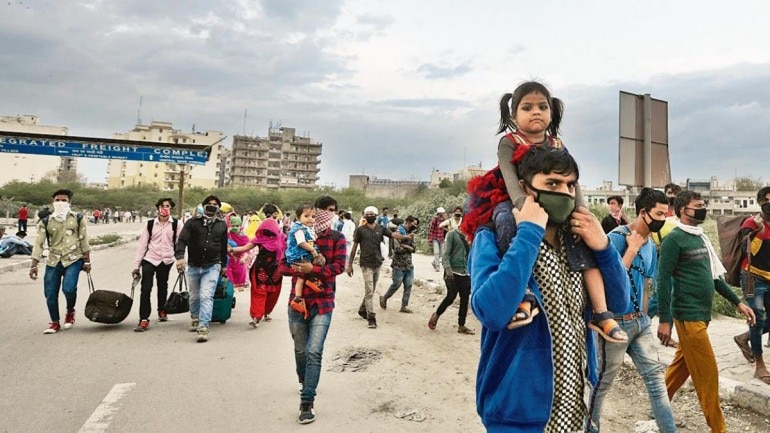The dead are
not spared. A part of
Delhi, the national capital of India, has been reduced to ashes. They’ve desecrated
a cemetery, mangled
vehicles, broken homes, injured people, killed
people – 39,
as I write this. North East Delhi is a lower middle-class area, the residents are mostly small shopkeepers and labourers.
On February
23, the eve of Donald Trump’s visit, mobs had collected in pockets and started torching houses. Their anger, apparently, was over the anti-CAA
and NRC protests. According to the Citizenship Amendment Act, people from Pakistan, Bangladesh and
Afghanistan can seek asylum in India, but only if they are non-Muslim. In North
East states like Assam, detention camps have already been built. To serve the
government’s purpose, legitimate Muslim residents are being detained as illegal immigrants using the National Register of Citizens. If it is introduced in the country there are fears Muslims will be most affected.
The
identification idea was expressed by Indian Prime Minister Narendra Modi when he said
that arsonists could be identified by their clothes. The mobs
in Delhi had begun to place saffron flags outside Hindu houses to identity whom to not target.
The rightwing
has been on a high. Among them are two members of the ruling Bharatiya Janata Party. Anurag Thakur’s
chant, “Desh ke gaddaron ko…goli maaron saalon ko (shoot the
traitors dead)” has become
the go-to anthem of the Hindutva herds.
Kapil Mishra’s role can be directly linked to the present
violence. “He threatened to mobilize a mob to clear out the
protesters. He said he did not want to create trouble while Mr. Trump was
visiting, but he warned the police that as soon as Mr. Trump left India on
Tuesday night, his followers would clear the streets
if the police did not.
Tensions shot up. As
Sunday evening approached, gangs of Hindu men and Muslim men began throwing
rocks at each other. This quickly degenerated into wider violence, with Hindu
residents accusing Muslims of attacking Hindu statues
and Muslim residents expressing fear that a Hindu mob was forming to get them.”
Shaheen Bagh
has been the fulcrum of the protests; women gathered here
day and night to peacefully demonstrate. It spread to
other areas and would have continued had the mobs not struck.
This was clearly an attempt to derail the protests and to project the brute power of majoritarian politics.
Is the world
interested? At the press conference in Delhi, when Donald Trump was asked about the violence a few miles from where he was, he said, "As far as the individual attacks, I
heard about it, but I didn't discuss that with him (PM Modi). That's up to
India."
Bernie
Sanders reacted: "Over
200 million Muslims call India home. Widespread anti-Muslim
mob violence has killed at least 27 and injured many more. Trump responds by saying ‘That's up to
India’. This is a failure of
leadership on human rights."
***
A few Muslim
protestors were dragged
along the ground, beaten up with batons, and made to sing the national anthem – not by the crowd, but by the
police.
The
complicity of the police force has been evident for a few weeks now. In one chilling incident, a guy aimed his
gun at protestors at the
Jamia Millia University campus. The cops standing yards away from him merely watched. They watched silently as he shot at a Kashmiri student. Another time, the cops
entered the university library and beat up the students. In N.E.Delhi
there has been a repeat. Many people have said that the police were helping the goons, or had a tacit arrangement not to
interfere. One mob leader said, “Give us permission, that’s all you need to
do. You just stand by and watch. We will make sure you don’t get hurt. We’ll settle the score.”
When mobs
offer the protect the police, it ceases to even
qualify as a police state. It is a gangster state that is asserting its
religious identity by using nationalism as a trump card. As happened in Ashok Nagar. They set fire to
a mosque,
put up a saffron flag on its minaret while waving the national flag; they raised slogans saying, “Hinduon
ka Hindustan”, the nation belongs to Hindus. In
another mosque, they burned a copy of the Quran, the holy book. A man who
probably had lost everything in the violence was collecting its singed pages.
People are
stopped at random and asked what their religion is. One man lied that he was
Hindu; they asked him to recite the Hanuman Chalisa, a beloved verse for
Hindus. He could not. They beat him up.
Mohamed
Zubair’s photograph pleading for mercy has become the
face of these riots. “They
beat me till they broke me. I begged them and they beat me some more, viciously. They made communally charged slurs and
took (BJP leader) Kapil Mishra’s name. I
don’t remember much. I just hoped my children were safe. I can’t bear to look
at my photograph, my legs shiver with pain.”
85-year-old
Akbari burnt to death inside her house when they set it on fire. She was too old
and frail to run and save her life.
***
After three
days of silence, and two days of his ostentatious show with Donald Trump, Narendra Modi woke up to comment
on what is happening in
Delhi. He did not address
the nation nor did he hold a press conference,
but he tweeted to say: “Peace and harmony
are central to our ethos. I appeal to my sisters and brothers of Delhi to
maintain peace and brotherhood at all times. It is important that there is calm
and normalcy is restored at the earliest.” There
is violence in the streets. People are in hospital and dying. And all he can think of are homilies about harmony. There is no reaching out to
the people, no assurances about how such normalcy will be achieved.
There is no
one to question him. Arvind Kejriwal of the Opposition Aam Aadmi Party (People’s party), and the chief minister
of Delhi, took a bunch of his ministers to Raj Ghat, a memorial to Mahatma
Gandhi, every politician’s favourite man for all seasons. Kejriwal has been
mimicking Modi by taking a soft Hindutva stance,
reciting verses on television and thanking Hanuman, the saviour of Lord Ram, in
his victory speech. Politicians in India have to use
religious nationalism to appease the majority that
constitutes 80 per cent of the population.
The
role of mainstream media has been questionable. While
the liberals among them
give a fair exposure to both sides, as they must, it is the editorialising with such false equivalences that is problematic. There are indeed casualties on both sides, but a pogrom is a
clear agenda against a particular group.
There are
other casualties. Tahir Hussain, an opposition politician, has been booked
for arson and murder because they found petrol bombs
on his terrace. Nobody is interested in facts – the fact that he called the police several times because a mob had gathered outside his house and he was taken to a
safe place. One is not
opposed to an investigation into the truth, but there
is a definite bias. Ruling party members who called
for the murder of Muslims, that resulted in Delhi
burning, are free. The judge who asked
the police to issue arrest warrants against them for
incendiary speeches has been transferred. Delhi
Police has told
the high court that FIRs
will be registered at an “appropriate time”. Are they waiting for more bloodshed? Is there
a casualty quota they have to meet? The
matter has been adjourned
until April 13. In six weeks, there will be more destruction, evidence will be doctored, witnesses will be silenced, there will be more
graves.
And they
don’t even spare the dead.
***









